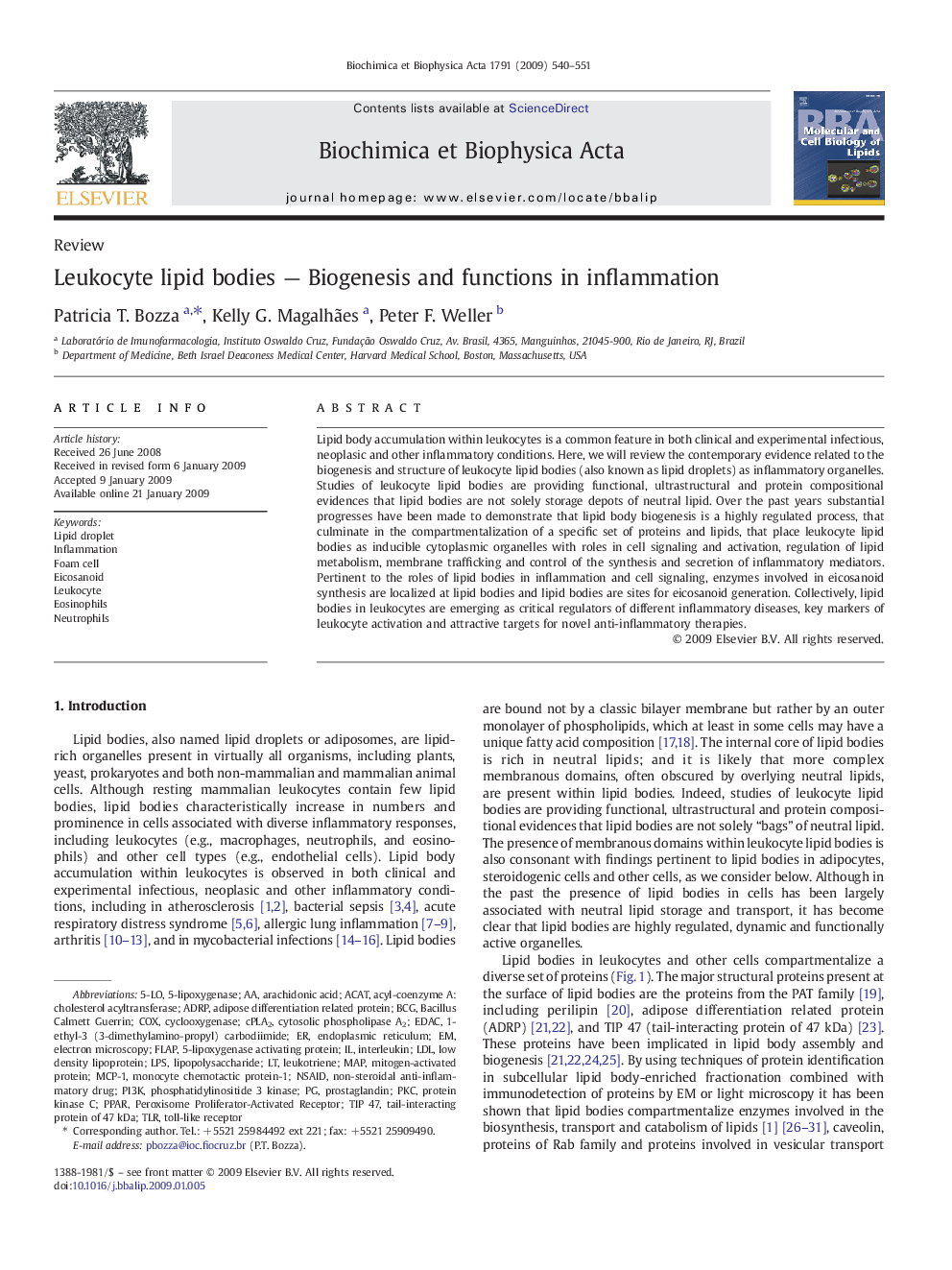| Article ID | Journal | Published Year | Pages | File Type |
|---|---|---|---|---|
| 1949941 | Biochimica et Biophysica Acta (BBA) - Molecular and Cell Biology of Lipids | 2009 | 12 Pages |
Lipid body accumulation within leukocytes is a common feature in both clinical and experimental infectious, neoplasic and other inflammatory conditions. Here, we will review the contemporary evidence related to the biogenesis and structure of leukocyte lipid bodies (also known as lipid droplets) as inflammatory organelles. Studies of leukocyte lipid bodies are providing functional, ultrastructural and protein compositional evidences that lipid bodies are not solely storage depots of neutral lipid. Over the past years substantial progresses have been made to demonstrate that lipid body biogenesis is a highly regulated process, that culminate in the compartmentalization of a specific set of proteins and lipids, that place leukocyte lipid bodies as inducible cytoplasmic organelles with roles in cell signaling and activation, regulation of lipid metabolism, membrane trafficking and control of the synthesis and secretion of inflammatory mediators. Pertinent to the roles of lipid bodies in inflammation and cell signaling, enzymes involved in eicosanoid synthesis are localized at lipid bodies and lipid bodies are sites for eicosanoid generation. Collectively, lipid bodies in leukocytes are emerging as critical regulators of different inflammatory diseases, key markers of leukocyte activation and attractive targets for novel anti-inflammatory therapies.
